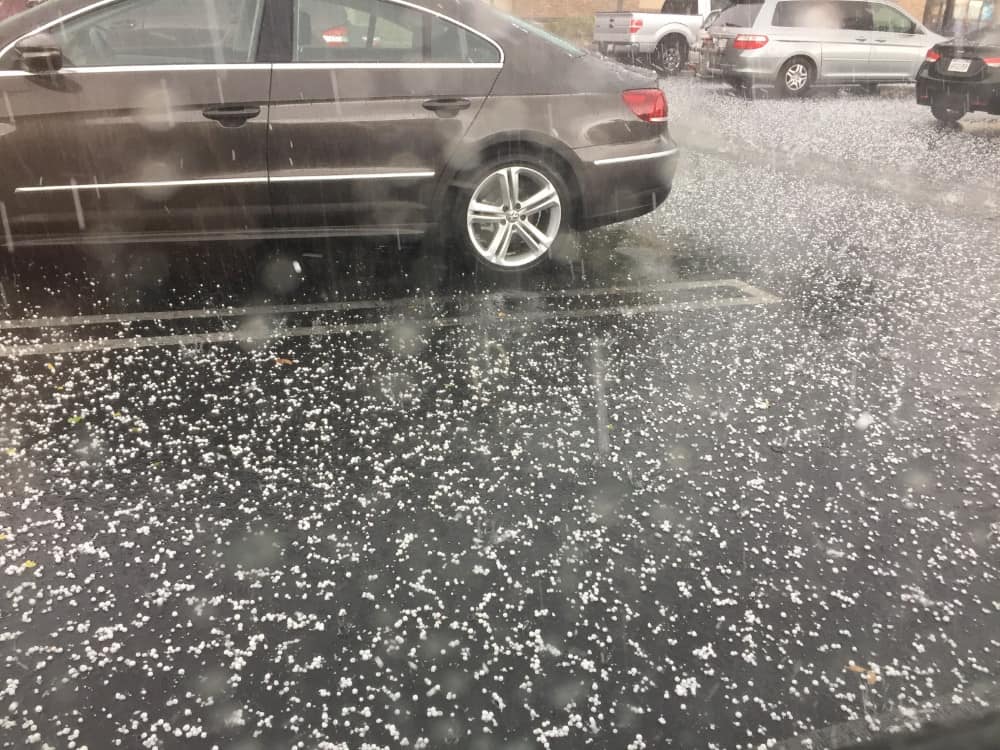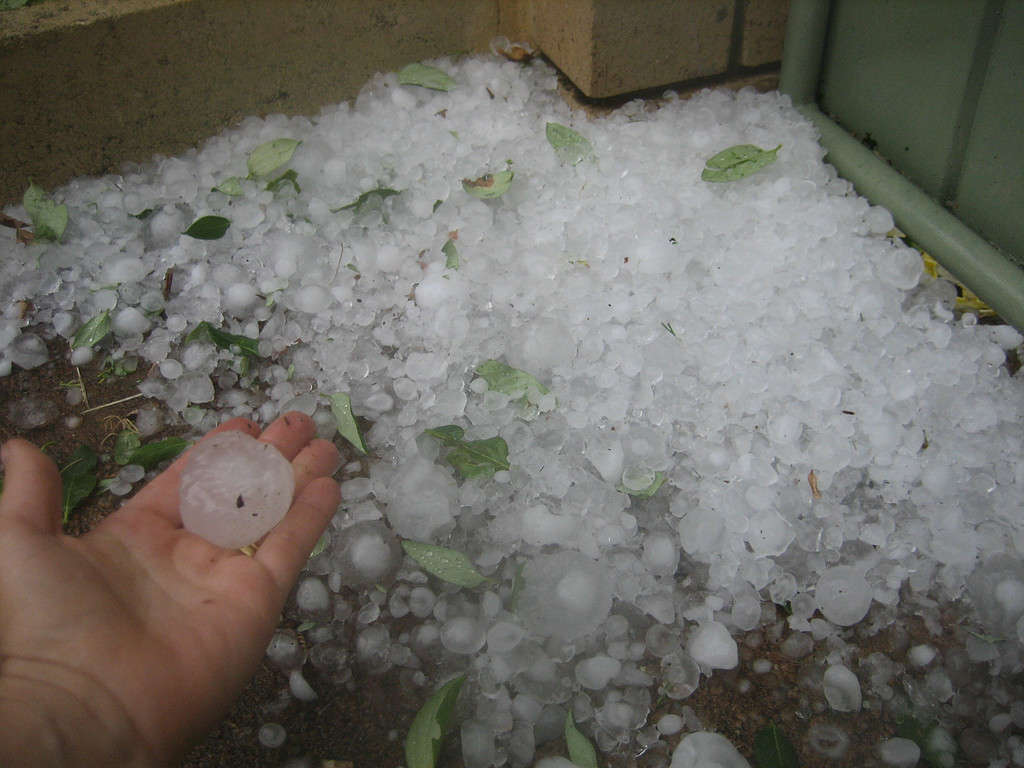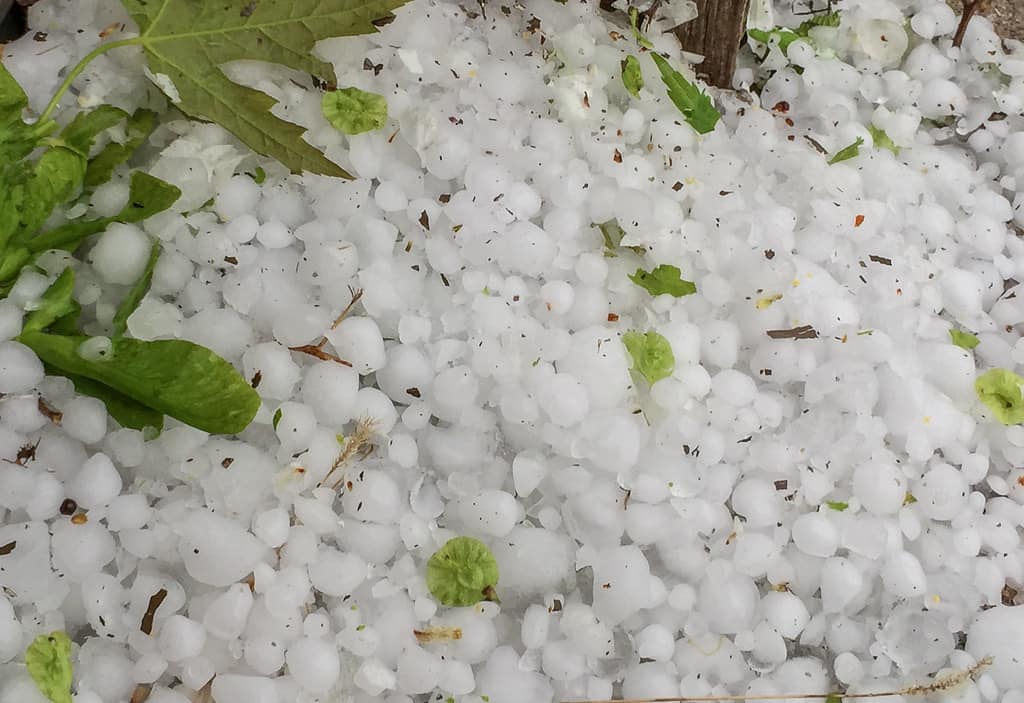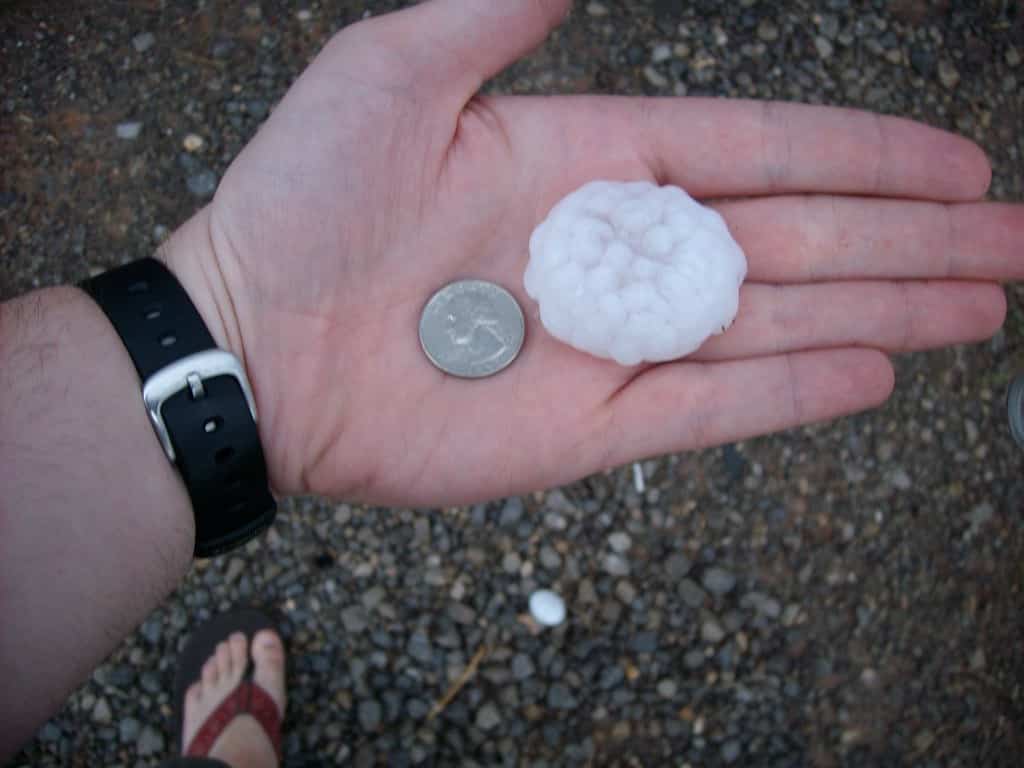If you’ve ever been to Florida, you’ve experienced amazing beaches and very warm weather. Along with the warmth in Florida comes tropical storms. Florida is unique because their tropical storms lead to a vast variety of outcomes. These include rain, wind, lightning, hurricanes, and even hail. That’s right. Hail does fall in Florida.
According to the NOAA, there are powerful enough updrafts to cause potential raindrops to fly higher into the atmosphere where it’s freezing. From there, the water is frozen together and weighs enough to fall through the updrafts. Based on the strength of the storm, that’s how much hail will fall. The stronger the storm means the updrafts are stronger, which means more hail will fall. So when is the most common time for hail to fall in Florida?
When is Hail Most Likely Going to Fall in Florida?

There’s a chance you’ll see hail in late March or April if there’s a strong storm, but those are rare.
According to the National Weather Service, hail in Florida is most likely to fall during late May and June. This is because the strongest storms in Florida take place during this time. There’s a chance you’ll see hail in late March or April if there’s a strong storm, but those are rare. However, during late April of 2023, Tampa saw some of the worst storms it’s seen in a while. These storms resulted in hurricanes, horrible rain, and even some hail dropping.
How Damaging Can Hail Be?

Hail can destroy your plants and shrubs, so be careful.
If you see on the weather report hail there’s a chance for hail to fall there are a few things you need to do. Make sure to bring any plants inside, put your cars beneath shelter, and don’t leave wherever you’re at until the storm is over. Hail can vary in size, ranging from the size of a pea all the way to the size of a grapefruit. Grapefruit size hail is rare, but it’s still important to be aware of hail falling. During these storms, the size in hail varies. This is why it’s important to stay indoors and away from glass. Falling hail can break windshields, destroy plants and trees, ruin tires if you’re driving, take down your roof, and even hurt you if you’re outside and hit by a piece.
Remember, hail is essentially falling ice, because it’s frozen water. The priority if it’s hailing is to stay safe and away from glass, because hail can break through. If you’re out and about, pull over to the nearest area with shelter of any kind. Should you be driving in the middle of nowhere, pull off to the side of the road and wait until the storm passes. Most hailstorms are over after 15 minutes, so be patient and wait it out. It’s not worth trying to test your luck.
What Should You Do After It Hails?

You should check your trees, plants, and bushes you weren’t able to get inside.
It’s important to get outside and check your property as soon as it’s done hailing. You need to check your roof and ensure it’s still able to hold your house up. You should check your trees, plants, and bushes you weren’t able to get inside. If you have a tall tree that was hit by hail, it’s vital to make sure all of the branches are still intact and won’t fall over.
Should any of your windows break, cover them right away with a tarp or blanket so no other nature can get inside. You should also check to see if there are any animals on or near your property. They might have used what you have for shelter. Even though they only last for 15 minutes, hailstorms can be very destructive, so make sure you get ahead of anything that might be broken.
Why Does Florida Get Hail, But Rarely Snow?

The air in Florida is warm and humid, rarely allowing for freezing of water closer to the ground.
©NOAA National Severe Storms Laboratory / PDM 1.0 – Original / License
As talked about before, hail is formed when the updrafts cause rain to go up into the atmosphere where it’s freezing. After that, the hail falls to the ground. Snow is formed when the temperature closer to the ground is cold. The air freezes the water immediately causing soft snowflakes to fall. The air in Florida is warm and humid, rarely allowing for freezing of water closer to the ground.
That’s why humid areas in the Midwest get so much snow. There is already a lot of moisture in the air, and the air is cold enough to allow for snow to fall. If it were to snow in Florida, it would be in the northern part of the state, near Jacksonville. Being further away from the equator means a chance for differing air temperatures, unlike in southern Florida.
Thank you for reading! Have some feedback for us? Contact the AZ Animals editorial team.








